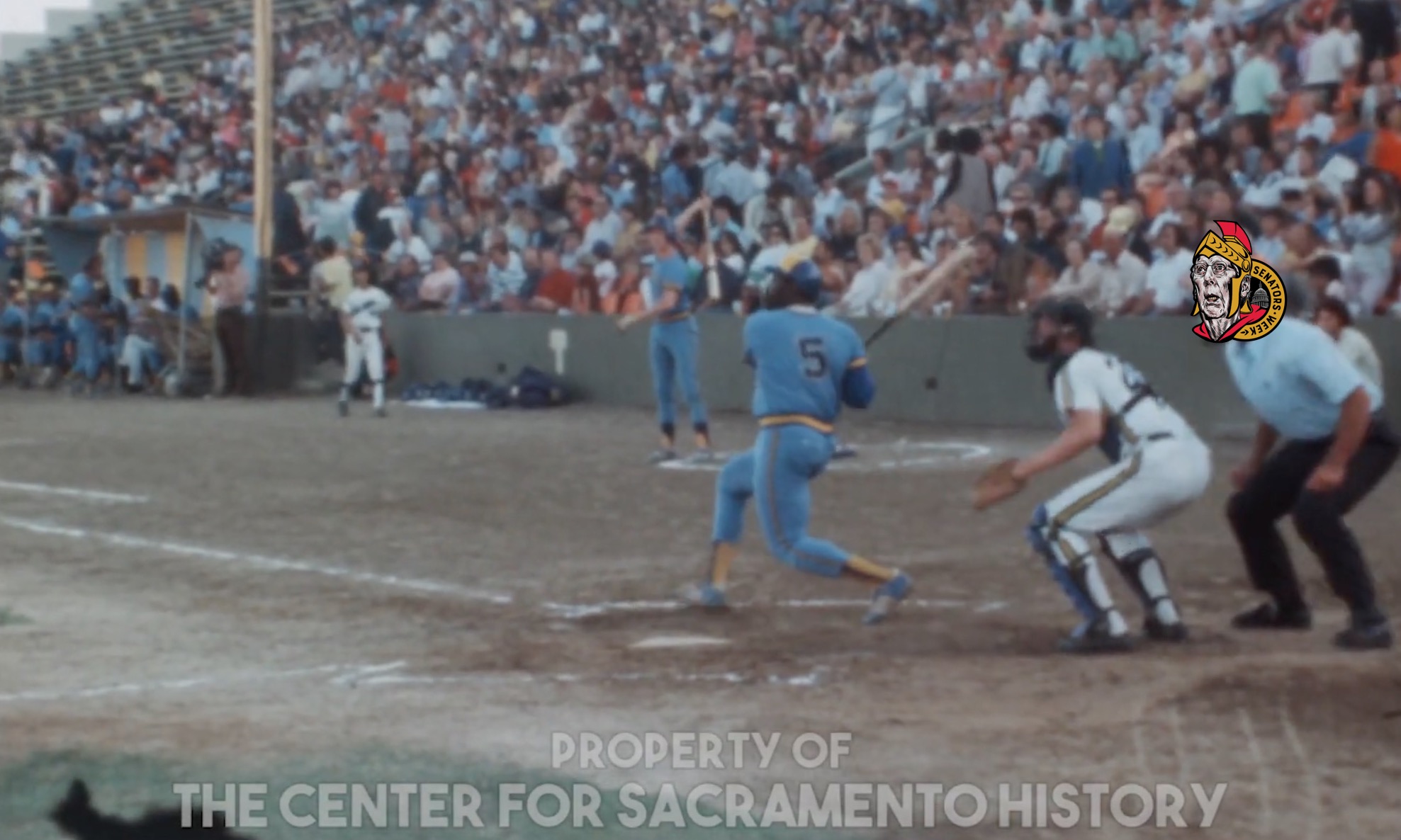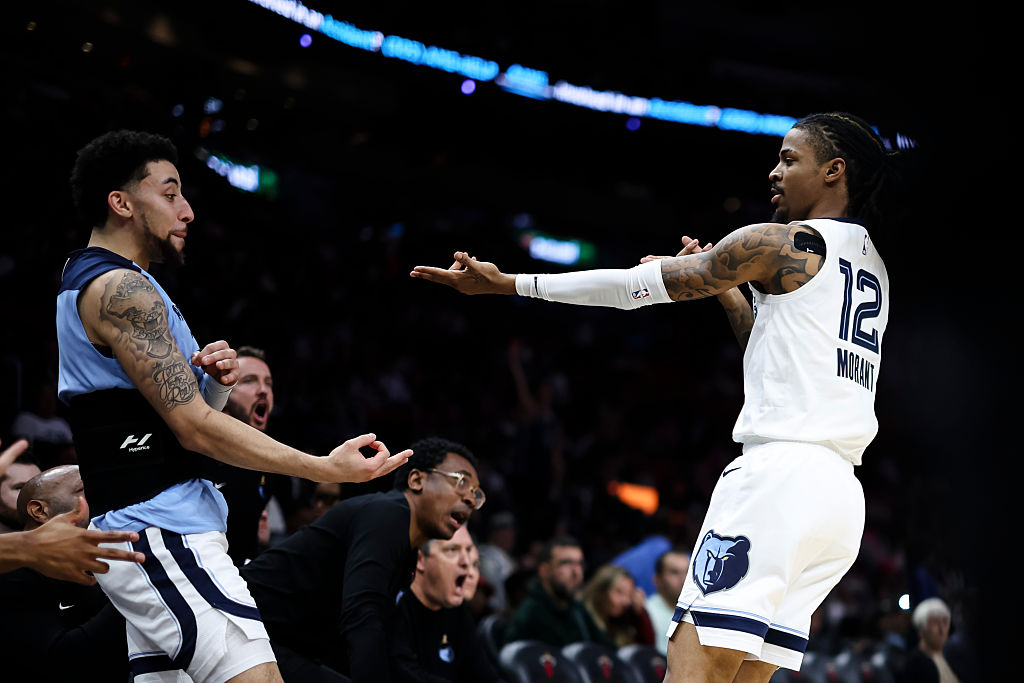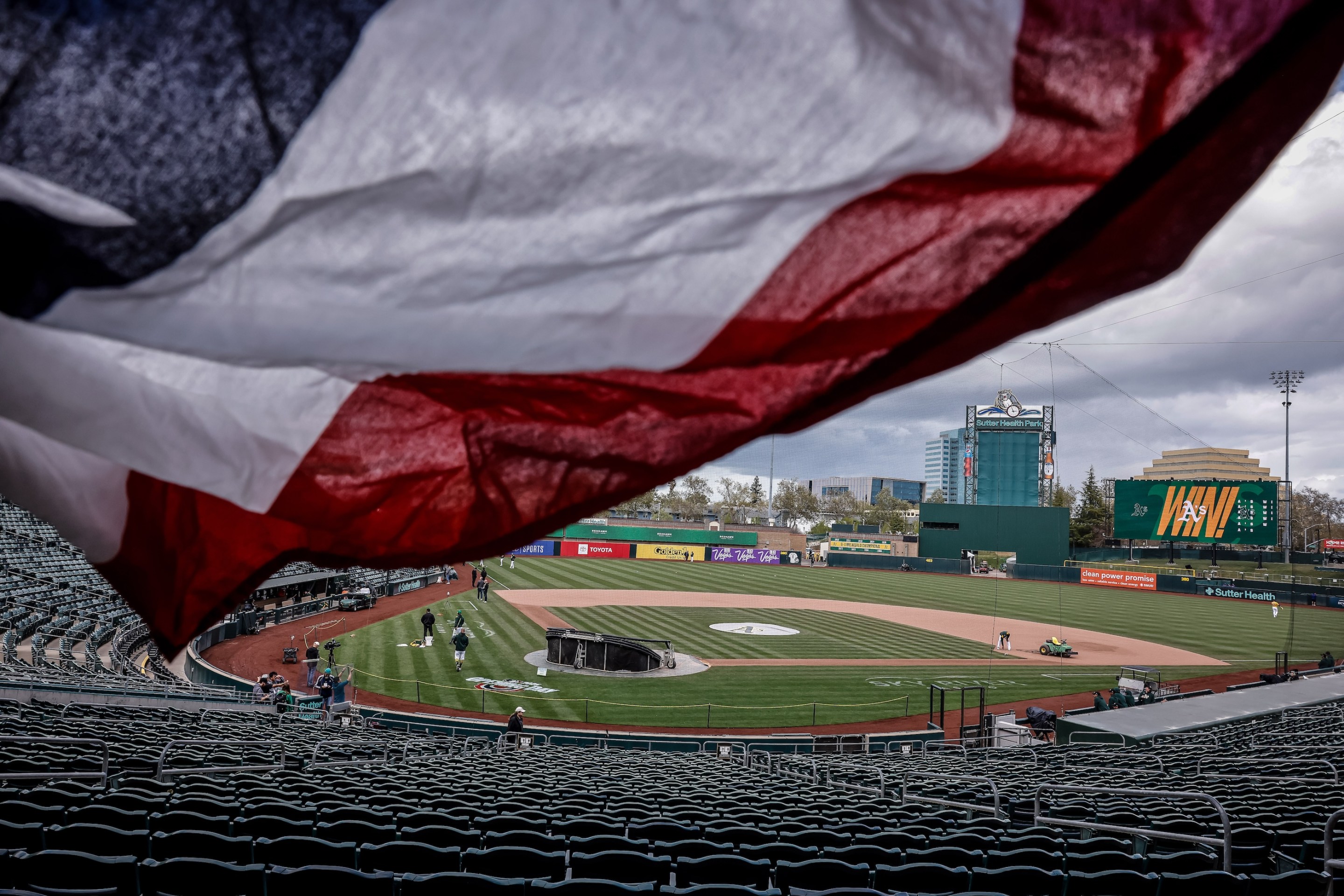This week, Defector has chosen to curate a collection of writing inspired by two entities that have had an indelible effect on North America: the upper house of the United States Congress and Eugene Melnyk’s pro hockey team. This is Senators Week.
Although Sacramento has never hosted a major-league team, the city has a rich baseball history. California's capital has had an organized baseball team since the late 1890s, and the Giants' Triple-A affiliate Sacramento River Cats consistently draw some of the biggest crowds in minor league baseball. The Sacramento Solons were one of the founding clubs of the Pacific Coast League in 1903, named in tribute to the Ancient Greek statesman and in reference to the city's importance as a governing center. Past names included the Senators, Gilt Edges, Sacts, Cordovas, Wolves, Pirates, Atlas, and River Pirates, though Branch Rickey stuck with "Solons" after he bought the team in 1935. (The current team appears to be a tribute to Sacramento's feral cat population, although I've gotten different answers on this from various team employees through the years.)
The team has come and gone from Sacramento a truly staggering amount of times through the years, once relocating to Fresno for the 1906 season and becoming the Fresno Raisin Eaters before slinking back, though our story begins in 1974. Sacramento had been without a baseball team since the Solons were sold and moved to Hawaii in 1960, though grocery magnate Bob Piccinini bought the Eugene Emeralds, Milwaukee's Triple-A affiliate, and revived the Solons moniker. Baseball was back. The only problem was the team didn't have a stadium.
The Solons' old ballpark on Broadway had been demolished a decade ago (there's a Target at the site now), leaving Piccinini scrambling to find a home for his club. For lack of any better options, he settled on Sacramento City College's Hughes Stadium, a football field. The stadium fix was so shabby that the Emeralds almost skipped past Sacramento and headed to San Diego. There was no way to fit anything even faintly resembling the dimensions of a normal baseball field into Hughes, but there was also nowhere else for the team to play in town, according to an excellent Athletic feature on the saga, so Piccinini and Solons GM John Carbray plowed ahead with their teeny playing surface. The center-field fence stood 390 feet from home plate, with the right-field fence at 300. Small, but not outrageous. It was the third boundary that became infamous. Carbray assuaged the league by claiming that the left-field fence was 261 feet away, but a group of enterprising journalists reportedly snuck onto the field at night and measured its distance from home plate at 232 feet. "When you walk out there to the fence, it makes you sick to see how close it is," Solons pitcher Craig Glassco told the Associated Press at the time.
Predictably, the park's ersatz dimensions led to an avalanche of dingers. Batters at Hughes smacked 491 dingers during the 1974 season's 66 home games, an average of about seven and a half per game. Two games featured 14 home runs each, and star first baseman Bill McNulty set Pacific Coast League records for home runs and total bases. Fans flocked to Hughes to watch the spectacle, and even though the team finished with the second-worst record in the league, they led the entire minor leagues in attendance. "The most boring thing in baseball is the 410-foot out," Carbray said, clearly happy that his gimmick had ginned up interest. Not everyone was happy though.
"It’s a Little League park with a big screen," Salt Lake City Angels manager Norm Sherry said. Brewers director of player development Tony Siegle traveled to Sacramento to catch the circus, and he was horrified by what he saw. "It was awful, the worst year of my life," Siegle told the Athletic. "It was a real travesty they made it go there. We had no choice. They held the franchise. They made it go to Sacramento, but I should have never allowed it. It was like playing in someone’s living room. It was not legitimate baseball." Pitchers on both sides dreaded playing in the stadium; only three Solons pitchers ended the season with sub-6.00 ERAs.
"I have compassion for pitchers. There's just no way you can pitch here without giving up home runs," manager Bob Lemon said, though somehow Spokane pitcher Steve Dunning tossed a no-hitter in Hughes. The team would occasionally play without a left fielder, since there wasn't all that much ground to cover. "If a ball was hit over his head … well, it wasn’t like he’d have far to go to get it," infielder Duane Espy said.
The fun lasted only one year. Unable to lock down the money for a new stadium, the Solons moved the fence back to 251 feet, and though home run numbers began to decline, it remained impossible to glean remotely useful statistical information from any game played in the stadium. The Brewers played one more season in the ballpark before they left in disgust, though a 41-year-old Hank Aaron did participate in a preseason exhibition game at Hughes in 1975 and even smacked a dinger over the left field fence. In 1976, the Texas Rangers needed a Triple-A affiliate, so they reluctantly moved their operation to Sacramento. The arrangement lasted one unhappy year, with the team bolting for Tucson as soon as they could. "We had no intention of staying in Sacramento under any circumstances," Rangers GM Dan O'Brien told the Arizona Daily Star in 1976. The Solons had to leave town too, as Hughes Stadium needed to be demolished and rebuilt due to earthquake safety regulations. The team's final run as the Solons ended after three years, but they jammed in enough dingers to tide everyone over for a few decades.






